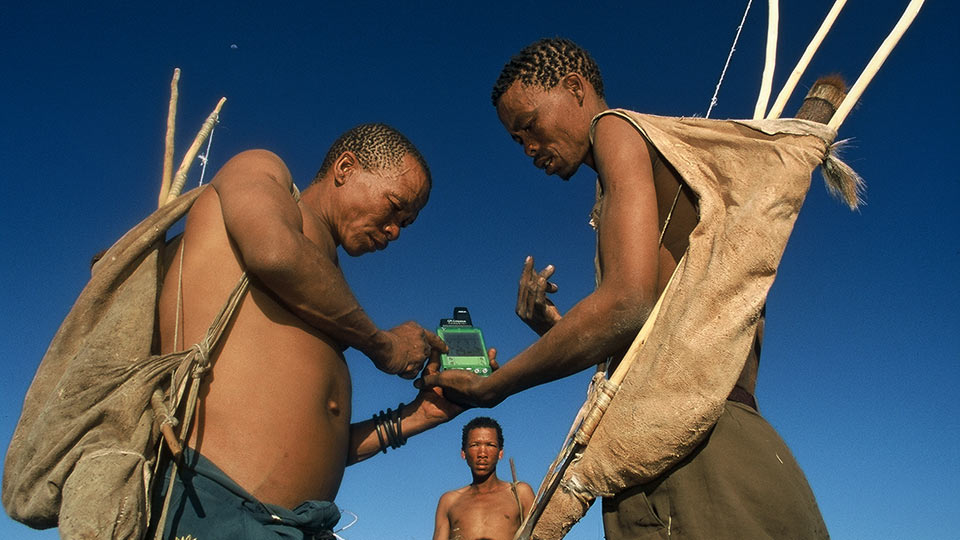Exercise equipment company strengthens IP protection with the Patent Cooperation Treaty
When personal trainer Justin Andrews introduced Krista Jacobsen to isometric exercises in 2014, her core felt the effect for days. They joked about creating a machine that could achieve the same results, but after a while Krista – an engineer and intellectual property (IP) lawyer – began thinking seriously about using technology to make exercise equipment more effective and motivating. She reached out to engineer Nick Sands, an old friend from university, and in 2015 Krista, Justin and Nick founded the US-based company Disruptive Force LLC.
Unlike most workouts, isometric exercises don’t rely on rapid movements. Instead, they require you to hold certain static poses which, by contracting muscles over long periods of time, can help strengthen and stabilize muscle as well as improve endurance. Basic isometric training simply require something to push and pull against. ‘Anyone can push a broomstick into the ground and feel how their core gets triggered,’ explains Krista. But with low-tech approaches like this it’s impossible to know how hard your muscles are really working, or whether your performance is improving over time.
See your strength™ with Axon®

exerted during exercise.
Enter Axon: the isometric exercise machine envisioned by Justin and built by Disruptive Force. This portable and programmable device uses multicolored LEDs to indicate how much pressure is being exerted on it during exercise – the harder you push or pull, the more LEDs light up. A display panel also quantifies the force being exerted. By providing real-time data on performance, Axon brings precision to isometric workouts.
The accompanying mobile app, AxonFit™, presents this data in easy-to-read charts so users can, in the words of the Axon’s trademarked slogan, ‘see your strength’. The team has also designed and tested a ‘robo trainer’ function for AxonFit that can also gradually increase the difficulty of the workout, allowing users to steadily and safely build up their strength.
Saving time and money with the Patent Cooperation Treaty
The design for this unique product didn’t arrive in a flash of inspiration, says Krista, but was instead reached by a long, iterative process of invention and refinement. ‘We actually had a couple of ideas before arriving at Axon,’ she recalls. ‘But, as patent attorney, I was very aware of the importance of being able to protect something as well as not infringing on anyone else’s IP. So we needed a way to make sure our ideas could be protected and weren’t going to get us in trouble.’

recorded by Axon in charts.
For answers, Krista turned to WIPO’s Patent Cooperation Treaty or PCT. This international agreement makes it possible for applicants to seek protection for their inventions in many countries simultaneously by filing a single international patent application rather than applying to individual national and regional patent offices. As part of the PCT procedure, an international search of published patents and other technical literature is conducted to see if those publications may influence the potential patentability of the invention.
‘One of our earlier designs had reached the prototype stage when I discovered a PCT application that pretty much disclosed everything we were thinking of doing – but two years earlier,’ recounts Krista. ‘So we abandoned that idea and had to come up with something else.’ When Disruptive Force developed Axon, Krista once again searched the patent publication databases for patents and other prior art documents. ‘When we couldn’t find anything, we knew we could move forward with this design.’
Despite the setback, the PCT saved Disruptive Force time and money by allowing the team to abandon an idea they were unlikely to be able to protect before investing significant sums of money in it. ‘The PCT is the cheapest way to get a sense of whether you've got something that's patentable,’ explains Krista. ‘And what’s the point of making it if you can’t protect it?’
Establishing Axon’s IP strategy
Now came the next challenge: where to patent? ‘We knew we needed coverage in the United States, but we didn’t know what the worldwide applicability of Axon might be.’ Once again, the PCT proved valuable. ‘One of the nice things about the PCT is that it’s kind of like an insurance policy,’ explains Krista. ‘It holds the door open in all of the PCT contracting states, so that you don't have to decide where you’re going to spend your money on actual patents at an early stage of product development. So we were able to delay the expense of having to pay for individual country patent fees.’
The 30-month PCT time frame gave Disruptive Force enough time to establish a clear IP strategy for Axon. ‘By the time our 30-month deadline arrived,’ says Krista, ‘we were far enough along with the implementation that we could choose the jurisdictions that made sense.’ Guided by social media engagement with the product, the team filed national patent applications based on the PCT application for Axon and AxonFit in the US, Australia, Canada and China – all of which have now been granted – and are currently seeking a patent in Europe. Using WIPO’s Hague System for the protection of industrial designs, they have also registered design patents in the US and China for Axon’s sleek appearance as well as a base which automatically charges the device.
The challenges of obtaining international IP protection
Other forms of IP protection have brought their own challenges. Aware that Axon was a popular name for businesses and products, Disruptive Force was keen to trademark it for their invention. Unfortunately, the name had already been trademarked in many of the countries where they plan to sell their product. Luckily, it was still available in the States, but US law – in a bid to prevent companies from accumulating IP they don’t use – forbids trademarks on names and logos from being registered if they aren’t being used commercially. The team was therefore only able to register the trademark on the name in the US in 2020, when they began selling a pre-production version of Axon.
As a small company, Disruptive Force has had to limit the number of countries it ultimately sought patents in. The significant cost of translating their national phase application into Chinese, for example, dissuaded them from submitting similar national phase applications to other potential Asian markets like Japan and Korea.

A stronger IP portfolio for Disruptive Force
Despite these challenges, Krista acknowledges that her professional experience in IP has helped the startup find its footing. ‘I think it would have been much harder to get the coverage that we wanted had I not been a patent attorney,’ she says. ‘So, if you can, I recommend getting a patent attorney involved in your company during the early stages. Because whenever you have a good idea, you can count on someone copying it. And if you don’t have any IP protection, you really don’t have any defense.’
It’s a situation Disruptive Force won’t find itself in. By putting IP protection at the heart of its business plan, the company is now able to defend Axon and AxonFit around the world. Krista’s decision to use the PCT has been central to this accomplishment, allowing her and her colleagues to develop a unique, patentable product and protect it in key international markets. As Disruptive Force looks to the future, this exercise equipment company is in good health.



